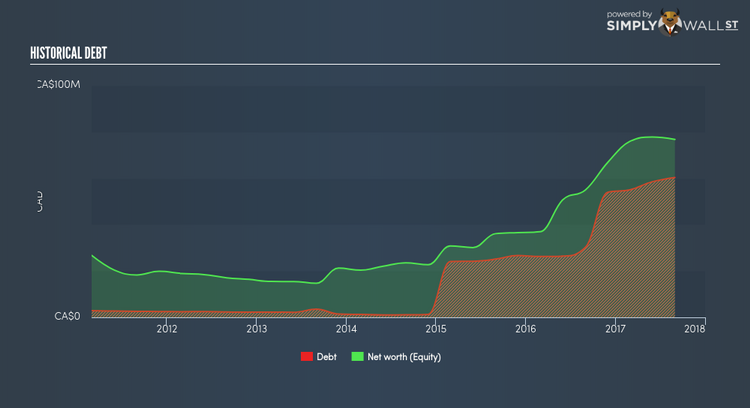With An ROE Of 12.33%, Has CIBT Education Group Inc’s (TSX:MBA) Management Done A Good Job?

With an ROE of 12.33%, CIBT Education Group Inc (TSX:MBA) outpaced its own industry which delivered a less exciting 11.42% over the past year. While the impressive ratio tells us that MBA has made significant profits from little equity capital, ROE doesn’t tell us if MBA has borrowed debt to make this happen. In this article, we’ll closely examine some factors like financial leverage to evaluate the sustainability of MBA’s ROE. See our latest analysis for MBA
Breaking down Return on Equity
Return on Equity (ROE) weighs MBA’s profit against the level of its shareholders’ equity. It essentially shows how much MBA can generate in earnings given the amount of equity it has raised. While a higher ROE is preferred in most cases, there are several other factors we should consider before drawing any conclusions.
Return on Equity = Net Profit ÷ Shareholders Equity
ROE is measured against cost of equity in order to determine the efficiency of MBA’s equity capital deployed. Its cost of equity is 14.40%. This means MBA’s returns actually do not cover its own cost of equity, with a discrepancy of -2.07%. This isn’t sustainable as it implies, very simply, that the company pays more for its capital than what it generates in return. ROE can be split up into three useful ratios: net profit margin, asset turnover, and financial leverage. This is called the Dupont Formula:
Dupont Formula
ROE = profit margin × asset turnover × financial leverage
ROE = (annual net profit ÷ sales) × (sales ÷ assets) × (assets ÷ shareholders’ equity)
ROE = annual net profit ÷ shareholders’ equity
The first component is profit margin, which measures how much of sales is retained after the company pays for all its expenses. The other component, asset turnover, illustrates how much revenue MBA can make from its asset base. The most interesting ratio, and reflective of sustainability of its ROE, is financial leverage. Since ROE can be inflated by excessive debt, we need to examine MBA’s debt-to-equity level. The debt-to-equity ratio currently stands at a sensible 78.62%, meaning the above-average ROE is due to its capacity to produce profit growth without a huge debt burden.
What this means for you:
Are you a shareholder? MBA’s ROE is impressive relative to the industry average, though its returns were not strong enough to cover its own cost of equity. However, investors shouldn’t despair since ROE is not inflated by excessive debt, which means MBA still has room to improve shareholder returns by raising debt to fund new investments. If you’re looking for new ideas for high-returning stocks, you should take a look at our free platform to see the list of stocks with Return on Equity over 20%.
Are you a potential investor? If you are considering investing in MBA, looking at ROE on its own is not enough to make a well-informed decision. I recommend you do additional fundamental analysis by looking through our most recent infographic report on CIBT Education Group to help you make a more informed investment decision.
To help readers see pass the short term volatility of the financial market, we aim to bring you a long-term focused research analysis purely driven by fundamental data. Note that our analysis does not factor in the latest price sensitive company announcements.
The author is an independent contributor and at the time of publication had no position in the stocks mentioned.


